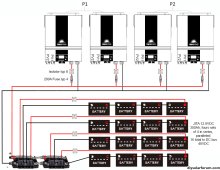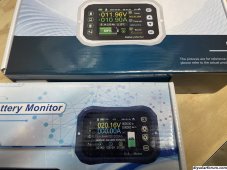garetwo
New Member
This should probably be in the BEGINNER section…but this forum looks very specific. I am an electrician learning about PV systems, I have a client trying to become as off-grid as he can. He has a system with a small PV array feeding into four inverters: SunGold Power 6.5KW BluePower SP6548 SOLAR INVERTER / CHARGER.
There are sixteen batteries. I am still trying to fully grasp 4S4P versus 4P4S and why there is a choice – I apologize for this and many areas where I lack understanding.
These sixteen JITA LifePO4 12.8Vdc 300Ah batteries have a spec sheet:
The inverters have settings for charging the battery bank. Do the specs above mean the non-accessible BMS provides a range of protection and we should set the charger rates to be in the middle?
Does discharge protection voltage mean it will drop out a cell somewhere from 10-10.8Vdc so we should try to maintain a charge above 10.8?
There are sixteen batteries. I am still trying to fully grasp 4S4P versus 4P4S and why there is a choice – I apologize for this and many areas where I lack understanding.
These sixteen JITA LifePO4 12.8Vdc 300Ah batteries have a spec sheet:
| PER BATTERY | |||||
| Nominal Voltage | 12.8 | VDC | |||
| Charge protection voltage | 14.2 | - | 14.6 | VDC | |
| Discharge protection voltage | 10.0 | - | 10.8 | VDC | |
| Maximum continuous charging curent | 100 | AMPS | |||
| Maximum continuous discharging current | 200 | AMPS | |||
| Temp range CHARGE | 32 | ~ | 122 | Fahernheit | |
| Temp range DISCHARGE | -4 | ~ | 140 | Fahernheit |
The inverters have settings for charging the battery bank. Do the specs above mean the non-accessible BMS provides a range of protection and we should set the charger rates to be in the middle?
Does discharge protection voltage mean it will drop out a cell somewhere from 10-10.8Vdc so we should try to maintain a charge above 10.8?










